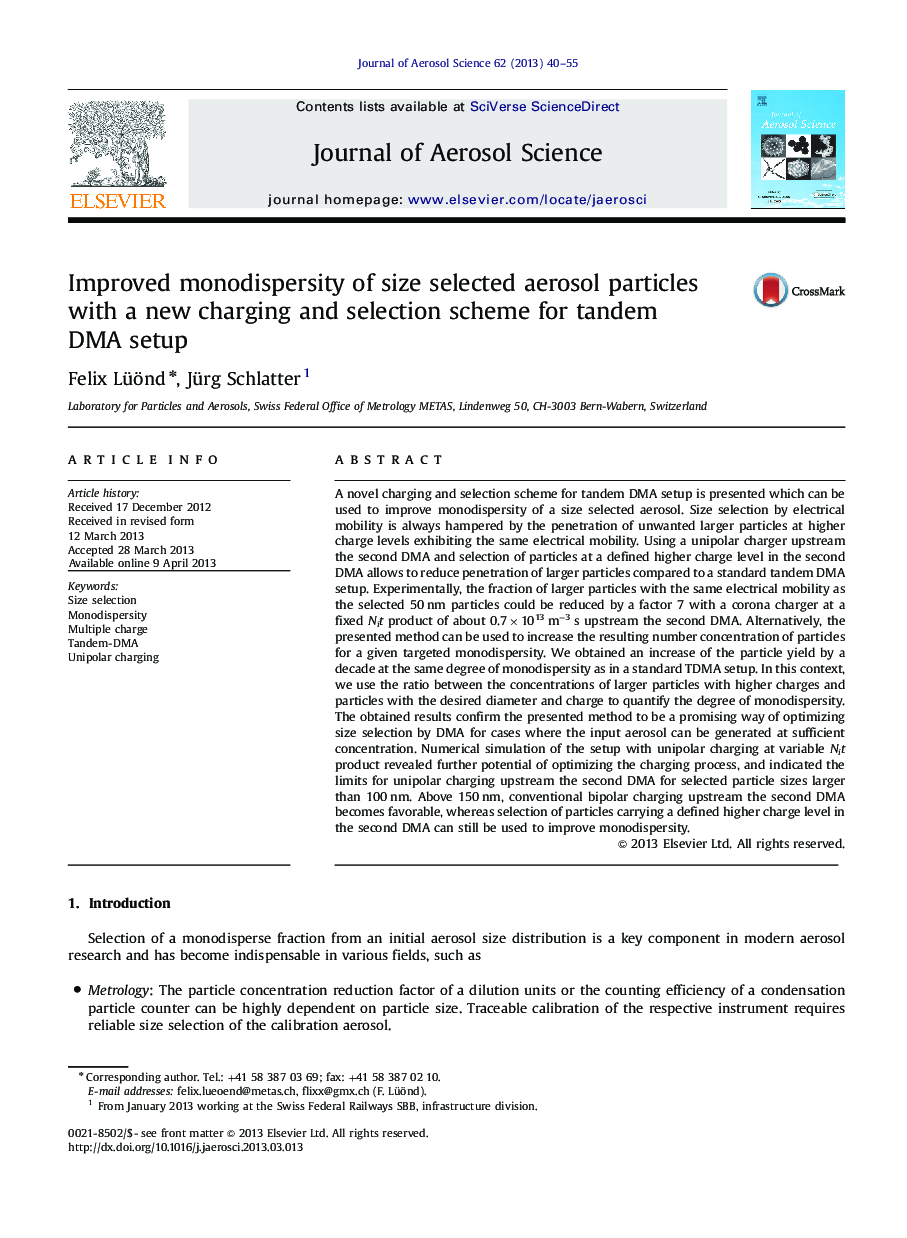| Article ID | Journal | Published Year | Pages | File Type |
|---|---|---|---|---|
| 4452490 | Journal of Aerosol Science | 2013 | 16 Pages |
•A new method is proposed to improve size selection with a tandem DMA setup.•Selection of 2- or 3-fold charged particles in the 2nd DMA improves monodispersity.•For 50 nm particles, the fraction of larger particles could be reduced by a factor 7.•Alternatively, the resulting number concentration could be increased by a decade.•Multiply charged particles allow for a lower signal-to-noise ratio in electrometers.
A novel charging and selection scheme for tandem DMA setup is presented which can be used to improve monodispersity of a size selected aerosol. Size selection by electrical mobility is always hampered by the penetration of unwanted larger particles at higher charge levels exhibiting the same electrical mobility. Using a unipolar charger upstream the second DMA and selection of particles at a defined higher charge level in the second DMA allows to reduce penetration of larger particles compared to a standard tandem DMA setup. Experimentally, the fraction of larger particles with the same electrical mobility as the selected 50 nm particles could be reduced by a factor 7 with a corona charger at a fixed Nit product of about 0.7×1013 m−3 s upstream the second DMA. Alternatively, the presented method can be used to increase the resulting number concentration of particles for a given targeted monodispersity. We obtained an increase of the particle yield by a decade at the same degree of monodispersity as in a standard TDMA setup. In this context, we use the ratio between the concentrations of larger particles with higher charges and particles with the desired diameter and charge to quantify the degree of monodispersity. The obtained results confirm the presented method to be a promising way of optimizing size selection by DMA for cases where the input aerosol can be generated at sufficient concentration. Numerical simulation of the setup with unipolar charging at variable Nit product revealed further potential of optimizing the charging process, and indicated the limits for unipolar charging upstream the second DMA for selected particle sizes larger than 100 nm. Above 150 nm, conventional bipolar charging upstream the second DMA becomes favorable, whereas selection of particles carrying a defined higher charge level in the second DMA can still be used to improve monodispersity.
